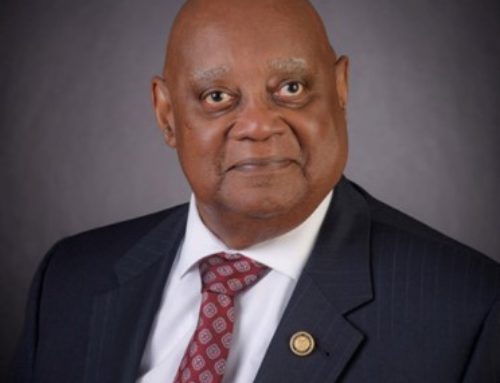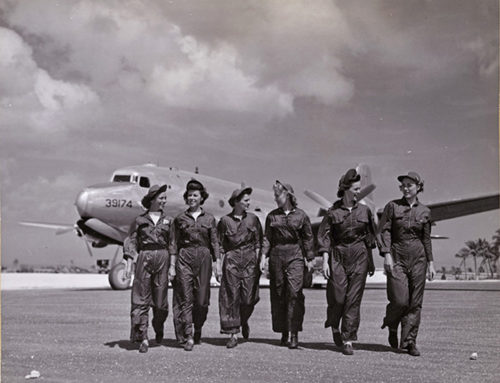On 25 November 1942, USS SILVERSIDES (SS-236) completed her third war patrol when she pulled into Brisbane, Australia. By 17 December the boat had refitted and was headed back out. Within days she was passing the Louisiade Archipelago, a string of volcanic islands that lie 125 miles to the southeast of New Guinea. But as the boat neared her assigned area, a complication arose: “In the forenoon [of 22 December] it was reported that PLATTER, G.M. F3c was suspected of appendicitis,” the commanding officer, Creed Burlingame, wrote in the patrol report. “By late afternoon it was evident that he had an acute attack.”
Very few World-War-II submarines carried doctors—there were simply too many boats. Instead, they carried pharmacist’s mates who were trained, in today’s terms, as paramedics, able to render medical assistance in the types of emergency situations in which submarines at war might find themselves. But these men were certainly not surgeons. The problem aboard SILVERSIDES was that Platter needed an operation, and quickly, before his appendix ruptured and killed him. After observing the Sailor for several hours, the boat’s pharmacist’s mate, Thomas Moore, told the captain he had two choices if he wanted to save George Platter’s life: turn around and rush back to Australia or allow Moore to operate. Burlingame immediately checked all the schedules he had on board, looking for another vessel with better medical equipment that might be in the area or a submarine on its way back to port. Nothing. The C.O. knew that Moore had had training as a nurse and had assisted with appendectomies during his time at the Naval Hospital in San Diego. Out of other options and unwilling to allow one of his men to die if there was a possibility of saving him, Burlingame, after checking in with Platter himself, gave the order. “At 2100 it was decided to operate. At 2152 [despite the fact that her batteries were only partially charged] submerged in order to provide steadier working platform and operation commenced.”
The crew leapt into action. It was decided that the wardroom, although small, would be the best place for the surgery since it was constructed mostly of easy-to-clean stainless steel and could be sealed off from the rest of the boat, making it as sterile an environment as was possible given the circumstances. The room was scrubbed from top to bottom and the light bulbs were replaced with the brightest ones the boat carried—150 watts. Since the table was not long enough for Platter to stretch out, an ironing board was lashed to one end to prop up his feet. Meanwhile, Moore assembled his tools. The Navy had provided him with scalpels, suturing supplies, anesthetic, and sulfa drugs to stave off infection, but he would need something with which to pull the sides of the incision apart. Heading to the galley, he acquired two spoons which he bent at right angles to make hooks. After thoroughly cleaning his equipment, Moore scrubbed in. Knowing that the naked light bulbs would heat up the small wardroom quickly, he stripped his torso down to his undershirt.
When all was ready, Moore closed himself in with several assistants and the diving officer, LT Robert Worthington, who would document the event with the sub’s sole camera, a Kodak Medalist. (This appendectomy would be the only one of the three performed on World-War-II subs that was photographed.) With the boat riding steady at 100 feet, Moore began. Burlingame described what followed in the patrol report. “Spinal anesthetic administered. Appendix had adhered to intestines and in trying to get it clear, part of the intestines popped out [of] the cut. At this time the local anesthetic wore off….” One can only imagine how the men performing the surgery must have felt when Platter suddenly said, “I can wiggle my toes now.” As the Sailor began to feel the surgery happening inside him, the surgical team administered ether, “following directions on the can.” Unfortunately, some of the fumes escaped and “this anesthetized the operating staff as well as the patient.” But the team recovered quickly and continued, requiring a total of four hours to complete the procedure. Platter survived, much to the relief of Moore, his assistants, and the rest of the men aboard, who had been receiving regular updates.
Platter was moved to a bunk as SILVERSIDES came to the surface in the early morning of 23 December, badly in need of a battery charge. An hour later, the boat was discovered by a Japanese destroyer and went deep again. “The patient convalesced the morning following his amateur appendectomy to the tune of a torpedo firing, two depth charge attacks, two crash dives and an aerial bombing which knocked him out of his bunk on the wardroom transom,” Burlingame wrote. Fortunately, Moore remained by his patient’s side throughout the attacks and managed to catch him when he fell. Both SILVERSIDES and Platter survived the barrage, although the boat sustained substantial damage: “Every light in the forward torpedo room and conning tower was knocked out, men thrown out of their bunks and knocked off their feet in the forward torpedo room, several being cut by flying glass, both barometers wrecked. I thought the conning tower was being wrenched loose from the pressure hull.” Given what his crew had been through, Burlingame broke out the medicinal whiskey to celebrate Christmas and their survival. “We added it to powdered eggs and canned milk,” he recalled later. “With a lot of imagination, it tasted almost like eggnog.” Moore and other members of the crew cared for Platter as he recovered over the course of six days, even custom-making a bedpan for him since the sub’s only real bedpan had long since been pressed into service as a oil pan in the engine room. In less than a week, Platter was back on watch. He would live on well into his senior years.
After SILVERSIDES pulled in at Pearl Harbor on 31 January, the story and photos of the surgery spread like wildfire. Although Thomas Moore was commended for his actions, the Navy gave strict orders to future submarine officers and pharmacist’s mates that surgeries were not to be performed under any circumstances since there was no guarantee of a successful outcome—George Platter was, in many ways, an extraordinarily lucky man. For him, Christmas in 1942 came a little early.






